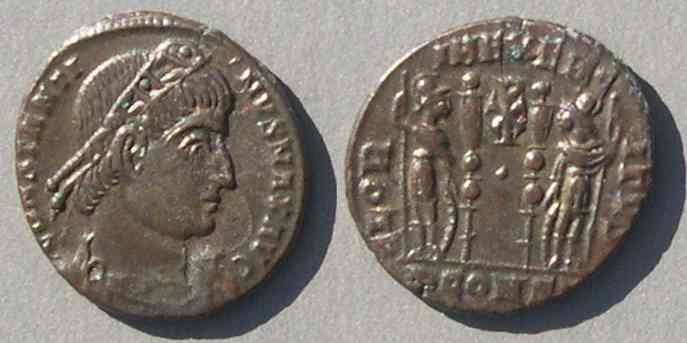This "Guest Commentary" appeared in Coin World in the Monday, December 9, 1996 issue, page 10.
Coin Collecting is a Hobby of the Mind
Coin collecting is a hobby of the mind. If the mind of the collector is stimulated, the hobby is stimulating. On the other hand, if the associated activity of the mind is sterile, so is the hobby. What is the future of collecting US coins?
Show a non-collector a 1914-D cent in high grade and the response will be that it is pretty old and well-preserved for its age. Why is this interesting? The head is just Lincoln's. Obviously, the importance of this minor variety requires explanation. But comments about the rarity of the date and mint mark, and the rarity of the condition for that date and mint mark, provoke only the mildest interest. The non-collector gets the point only when the real interest is finally broached--it is worth a lot of money. Certainly there is nothing at all rare, and little of intrinsic interest, about the type. Nevertheless, a high-graded example can excite a collector. Why?
Coin collecting is a hobby of the mind. The collector's response depends entirely upon the thoughts the coin evokes. The thoughts are based on acquired knowledge--they are not innate. If the collector knows that relatively few were minted, or that few extant examples grade higher, he will respond differently that if he is aware that huge numbers were minted, or if there are a thousand finer pieces.
The point is that his response is based on the enjoyable connections his mind makes with the relevant things he knows. Collectors of US coins can be proud if they can identify key varieties, judge authenticity, and accurately grade and price coins. But this is the heart of the problem. Most of the thoughts provoked by a desirable coin are worth knowing only because they must be known to price the coin, not because they are worth knowing or enjoyable in themselves.
That is why, with some exceptions, the hobby of collecting US coins is sterile. The thoughts provoked by the contemplation of a coin are supposed to be enjoyable, but most have settled into a rut generated by the collecting fraternity. Is the grade right? Is the price right? Where is the relevance to outside factors, such as "Is the coin really interesting?"
No wonder it is hard to recruit new collectors. We constantly reiterate that the hobby requires a great deal of knowledge, but most articles about the hobby encourage and validate thinking about factors that are of interest only because the hobby itself says they are. Not, "Knowledge will bring you pleasure," but "Lack of knowledge will get you burned."
Note I did not say coin collecting is sterile. I recently bought two coins of the same denomination, design, legend, and general appearance. One cost $12 and the other $330. Assuming I am not crazy, there must be something in my mind that made the one so much more valuable than the other.
In this case, both coins were minted in the fourth century by the emperor Constantine the Great, the first Christian emperor. Although coins of Constantine are extremely common and Christian signs are common on coins minted immediately after his reign, there are no overtly Christian coins minted during his reign and only a very few of his coins display even a tiny Christian symbol. My expensive coin has one of those symbols, a small but bold chi-rho monogram of Christ in the middle of the field between two soldiers and two standards. Because of this small symbol there is a great deal of difference in rarity between my two coins, but rarity does not make an ancient coin valuable in the absence of a significant connection to history. However the historical connection is strong; it is one of the very first Christian coins.
How does my explanation of price differential compare to yours? My coin is worth contemplating because of what I know about history, religion, and ancient coins, not just because of what I know about price. A hobby of the mind is only as vital as the activities of the mind it provokes.
Here are the two coins discussed. They were not illustrated in the original commentary.


Both coins: Constantine the Great, Roman emperor, AD 307-337. Coins struck 332-334. Copper. 18 mm. Obverse: Portrait of Constantine with diadem, legend CONSTANTINVS MAX AVG. Reverse: GLORIA EXERCITVS (glory of the army) around two soldiers holding spears and resting inner hands on shields, on either side of two standards. Mint mark PCONST for Constantina, which is the name at that time of the modern city of Arles, France.
Left coin: Green patina. Palm branch between the standards.
Right coin: Brown patina. Christian symbol chi-rho between the standards.
Return to the master page of this site.
Comments may be addressed to me at 


